How Benh Zeitlin Made an ‘Impossible’ Film (and Why the Industry Is ‘Disturbing’)
After the breakout success of Beasts of the Southern Wild, Benh Zeitlin had Hollywood in his pocket. But he refused to play its game.

When it comes to Sundance success stories, nothing quite rivals 2012's Beasts of the Southern Wild. The micro-budget film was produced by a small, scrappy New Orleans filmmaking collective and helmed by a first-time director. It starred non-professional actors and was made guerilla-style, with the crew often working out of an abandoned gas station in the Bayou. Beasts took the festival by storm, winning the Grand Jury Prize: Dramatic, and was eventually acquired by Fox Searchlight for $2 million. It went on to gross more than $20 million at the box office and garner four Oscar nominations, including one for Best Picture and Best Director.
"After Beasts of the Southern Wild, we realized we had this opportunity to make something impossible."
In the wake of Beasts, director Ben Zeitlin found himself in a situation that a first-time filmmaker can only dream of. His debut had been so wildly successful, both financially and critically, that Fox Searchlight was willing to write him a blank check to make it happen again. He immediately thought of Wendy, a reimagining of the Peter Pan story from the perspective of Wendy as the heroine. Zeitlin and his sister, Eliza, who was also the production designer on Beasts, had wanted to make this movie since they were children. Now was their chance.
If only it were that simple. Over the course of a seven-year production, Wendy would weather major studio changes, intense ideological battles about the story and Zeitlin's process, and what Zeitlin describes as "crazy" production challenges—including shooting in the remote wilderness of the island of Monserrat, where no film crew has ever gone before. No Film School sat down with Zeitlin just before the New York premiere of Wendy to discuss his disillusionment with Hollywood, the monumental logistics he faced on set, and more.
No Film School: Tell me about how this movie became possible after Beasts of the Southern Wild's success at Sundance.
Benh Zeitlin: Well, we started talking about doing Wendy at Sundance. It had been a movie that my sister and I had dreamed about since we were very little. The story evolved over time. We did puppet shows when we were small children and then we talked about making it in high school again.
As we became professional filmmakers after Beasts of the Southern Wild, we realized we had this opportunity to make something impossible. Wendy always felt like the impossible project given the process that we wanted to execute on it. We wanted to work only with non-actor children and to build this 35-foot underwater sea creature and shoot it practically in the ocean. These were very challenging ambitions. Everyone had told us that it couldn't be done, that would take too long. But after Beasts, we got the opportunity to jump on this project.
There were a lot of thematic things swirling around in our lives at this point. I spent all those years with Quvenzhané Wallis, from meeting her [after casting her in Beasts] when she was 5 to finishing campaigning for the movie for the Oscars when she was 9. I saw her grow up into this moment where pure early childhood ends and you start to become self-conscious, aware of the outside world, aware that your actions have consequences. You feel these responsibilities. It was interesting to see how that changes someone and what it takes to stand up against that.
We were going through a similar change as filmmakers. We had this very utopian, defiant filmmaking process that had always existed amongst friends and family. Then, Beasts got this audience, and all these external factors forced us to become more grown-up and practical. We saw this parallel between what we were going through and the themes of the Wendy story: the battle to keep your freedom and your joy in spite of having to grow up.
"We had this very utopian, defiant filmmaking process that had always existed amongst friends and family."
NFS: What did that process of leaving utopian filmmaking and coming into the real demands of the film industry look like for you?
Zeitlin: Well, Beasts was designed in total defiance of that. We designed a film that couldn't be corrupted or controlled in any way. We shot it in places that were so remote that there was absolutely no way that anyone could be there who didn't absolutely have to be there. It was so challenging, every one of the locations. And we were really adamant about making the choice to sort of finance the film the way that we did. And so, with future projects, we were very adamant that we wanted to continue to work like we did on Beasts, and with the same people.
As I found out after Beasts, when you hit the film industry, there's all this pressure to leave your team behind. But I work so collaboratively. I rely so much on my producers. My sister is my production designer. I like to give a lot of creative latitude to a lot of people. And so I never felt like Beasts was purely me and my vision. If I struck out by myself to do [my next film], it'd be such a loss, personally and creatively. So keeping my team intact was really important to me.
"I never felt like Beasts was purely my vision. If I struck out by myself to do my next film, it'd be such a loss, personally and creatively."
NFS: It's so counterintuitive that Hollywood would want to isolate breakout indie filmmakers from their collaborators. That's like taking all but one of the ingredients out of a recipe and hoping it tastes the same.
Zeitlin: It's horrible. It's one of the most disturbing things about the film industry. It's really insidious. The industry tries to blow up your ego. It's really unhealthy for creative people to become convinced that they're geniuses and that the people who have been helping them are actually holding them back. Those are the sort of things you get told by agents and by people who want to become your central collaborator for whatever reasons, be them financial or ego. It really disturbed me.
Wendy was, in many ways, a reaction against that—to protect what we do and how we do it.
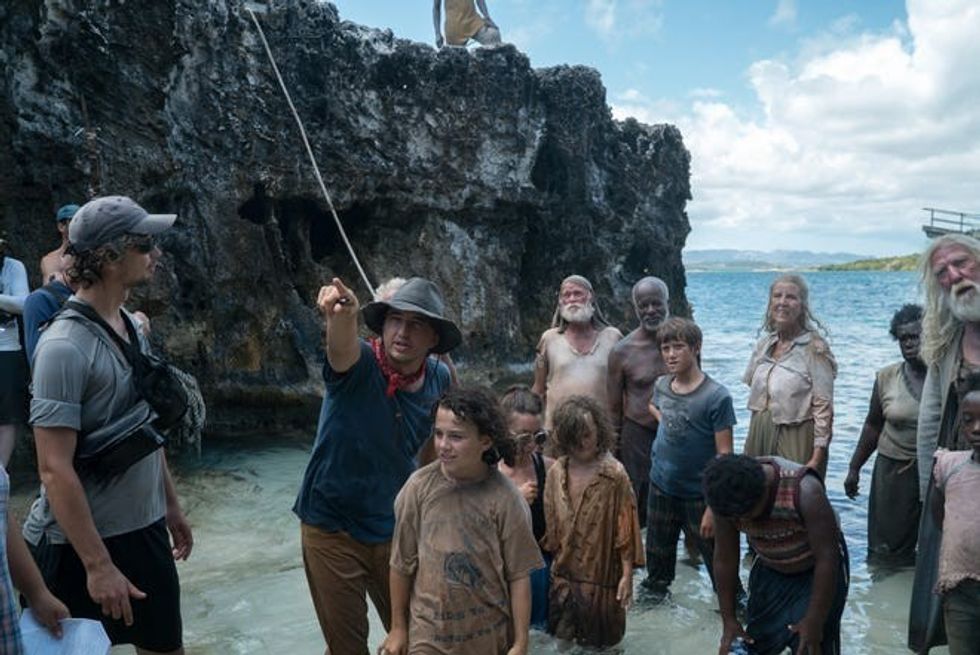
NFS: So how did you wind up protecting your process on Wendy?
Zeitlin: By taking on incredible challenges, I think. We were doing unprecedented things, so there was no way to tell us, "You should do it like this." It wasn't like anyone else had made a 35-foot underwater sea creature that was operated by divers and shot in the ocean. And the reason you've never seen the 35-foot sea creature before is because no one gets to spend 3 and a half years building something for a film, or 2 and a half years developing a cast of children. These are not things that are allowed in the industry.
Once we committed ourselves to the process, we had to see it through—we were the only people who could have done it. We designed this production to be hard for anyone to interfere with. Every single part of the process was very, very unique. The film demanded things that were really wild.
NFS: What was the screenwriting process like?
Zeitlin: I wrote the film as I was traveling in Montserrat, in this off-the-grid volcanic exclusion zone with goat hunters. I was on the beach eating coconuts with a notepad. We decided to design a film around this island, where nothing had ever been shot before. There was no filming infrastructure; there were no laws for shooting a film. And there was no access to most of the locations, so we had to build access to almost everywhere that we shot.
"We designed this production to be hard for anyone to interfere with."
The script was written based on this exploration. And as we cast each [actor], we were radically rewriting the character based on who the actor was. And so the whole script is this pliable fabric that we can wrap around things that we're finding that blow our minds. It has an ever-changing quality up until production, which is quite unusual.
It's not like we write, finish the script, then cast, then scout. All those things happen together, and everything affects everything at the same time.
NFS: Like an experiential approach to writing.
Zeitlin: It is. It's an experiential version of making a movie.
For me, movies always start with a question that I don't have an answer to. In some ways, a movie is a designed adventure that leads you to the answer that you're looking for.
As filmmakers, we were growing up and having to change how we did things in order to continue doing what we do. We designed a film that was crazy to make. We demanded of ourselves that we live a movie—and make choices—the way that Peter Pan made choices. But then we found our way through that to Wendy's answers.
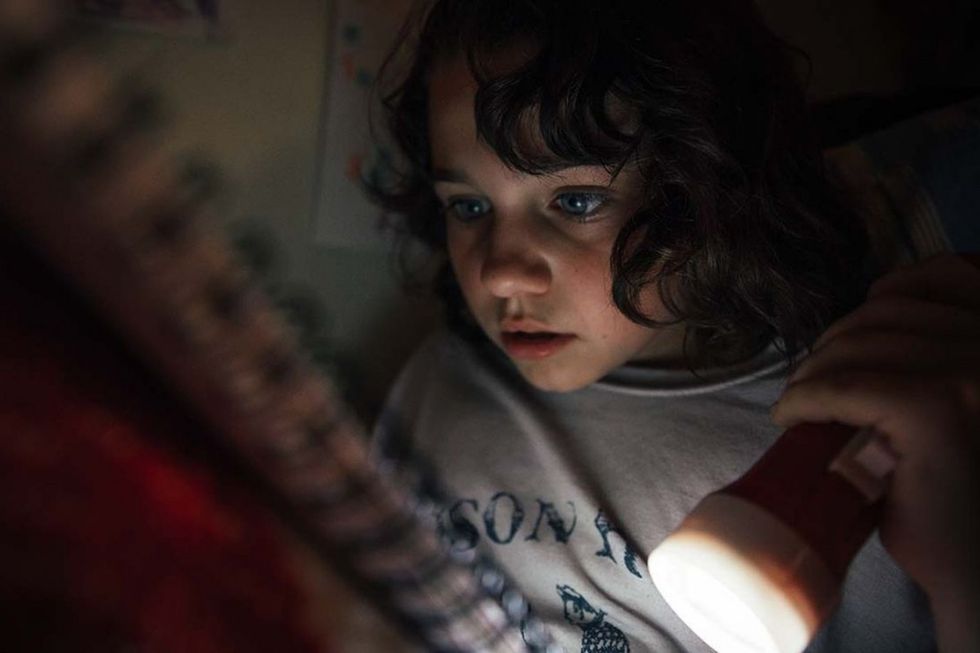
NFS: How did this Peter Pan vs. Wendy, or kid vs. adult, tension play out on set?
Zeitlin: A good example is Wendy's speech that she gives to the lost boys at the end of the movie. In the original script, the speech was eight pages long. It was all over the place. We couldn't figure it out when we were writing.
In the end, what Wendy says in her speech came from my experience with these kids on set. I was both part of the pack and also very much like a parent. I had to learn how to do both things at the same time. I couldn't be a disciplinarian, but I had to control the kids. If you force them to act, though, they aren't able to act well. They couldn't give the performance we wanted unless they were having fun. So for me, it was like, how do you combine ambition and joy and wildness and structure and freedom? This was the question I was trying to answer. I learned how through the process of working with these very wild, undisciplined children.
"I sometimes got to places where I felt like I had to just do something apocalyptic, like scream my head off or just walk off the set. But I never ended up doing that."
NFS: Was there anything that you really had to fight for with Fox?
Zeitlin: Well, the studio knew that they could never have made Beasts of the Southern Wild. They wanted Wendy to come out like that. And so there was a trust that they had in our process when they green-lit the film. But once we actually started making the film, it was not like that.
Our approach is always "do it real." So if we're filming a volcano, go to a volcano. If it's a sea creature, it's got to be there in the shot.
It was a real battle to even keep "The Mother" [the giant practical sea-creature puppet] in the film. My sister was our production designer and the head of The Mother team. That was a real battle, and that puppet took three and a half years to make. We shot it on the initial production 2017, and we were still shooting elements of it in 2019. It was such a massive, massive challenge to try to do something like that practically. It was a real test of faith, I think for everybody, that it would ever come together. In the end, it really does look like the original vision.
"These are not things that are allowed within the industry."
NFS: How big was the puppet?
Zeitlin: The original puppet's head was 35 feet long and probably 12 feet wide. So, I mean, it was huge. It was a boat. That puppet didn't really end up in the film, but the head from that puppet did. We ended up filming with a full-scale head that the kids could interact with and swim in and touch and feel. And then we had a miniature that was also fairly big. That one did all the locomotive work. It was designed by Jason Hamer in Los Angeles, who was also our prosthetics guy.
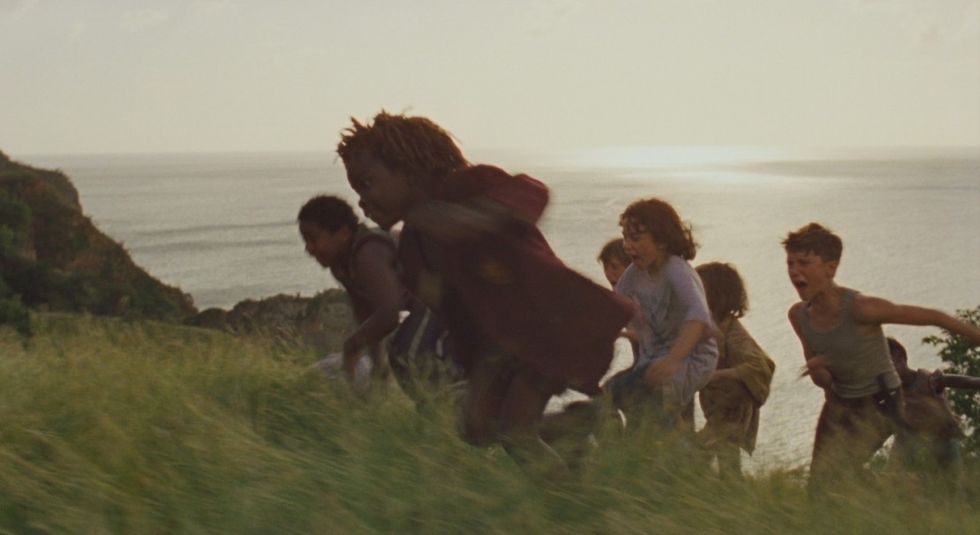
Zeitlin: It sucks. I think that I'm a very, very collaborative director in general. I listen to everybody. I screen the film constantly for the studio, for my producers. It's not like I lock myself away and say, "It's my vision, my way or the highway, go fuck yourselves." Everyone is deep inside the process.
That being said, I sometimes got to places where I felt like I had to just do something apocalyptic, like scream my head off or just walk off the set. But I never ended up doing that. I always engaged the conversation and managed to hold my ground on things that I felt were really fundamental and essential. And I think, in the end, everybody got to the end of this film still speaking and friends. I'm really proud of that.
"There's a resistance to depart from a very stratified production structure that has always existed. Most film productions feel like you're in the army."
NFS: It sounds like you picked your battles.
Zeitlin: Yeah. Definitely battled a lot.
I think that when you listen and when people feel fundamentally respected, it helps. Had we been fighting in a different way, maybe the film would have been taken away from me. I guess it always can happen!
At the end of the day, everyone who worked on this film had its best interests in mind. It was a dream project for everyone involved. We all wanted to accomplish making this incredibly challenging movie and we all had the same goals. Oftentimes, even when you think someone is trying to sabotage the movie, they actually are just trying to take care of the movie in a different way. That was something that I had to make sure to really check myself on. I had to understand: Why are they advocating for this? And it was usually because they were trying to save something else they thought was essential.
NFS: It's kind of like an exercise in empathy.
Zeitlin: It is. It is. And this is a very sweet movie. I wonder what would happen if we were making some horrific, ugly horror movie. I think we wouldn't have saved some of the things we saved if the film fundamentally didn't touch the people making it.
NFS: Can you tell me a little bit about some of the logistical challenges that you encountered in production? I imagine that's what took the brunt of 7 years.
Zeitlin: Yeah. The design of the production was incredibly complicated. It took place on three islands, and in Louisiana and Mexico. We were also working with live trains. Doing that safely was a massive undertaking.
On the islands, it's like you're building a government from the ground up. I think was very naive about shooting in these remote places. It was like, "If I can get there, I think you can shoot there." But then you think about bringing a film crew and seven children and old people.
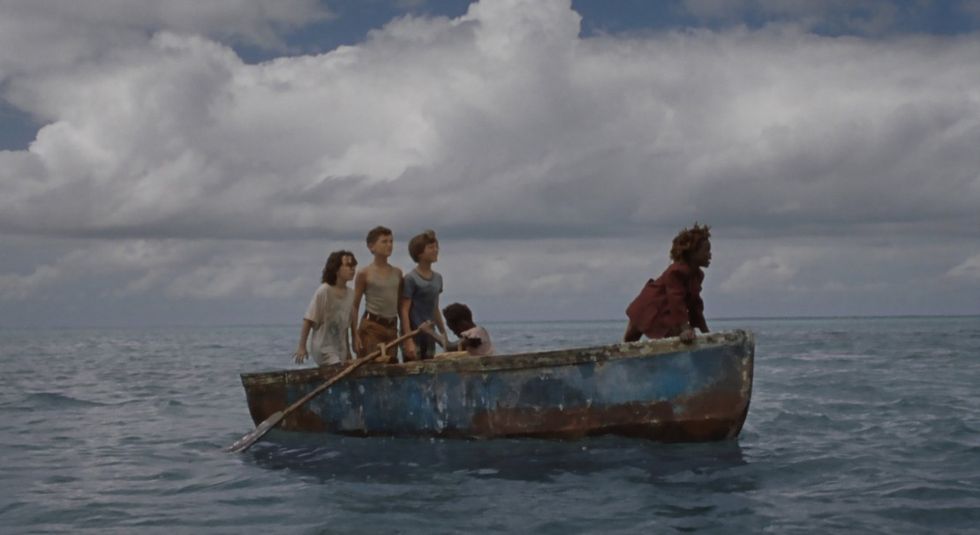
"We essentially had to build a road through a volcanic ash field and have helicopters on standby."
We shot in an exclusion zone on an active volcano. Those were places that I scouted illegally with guys from the island that knew how to do it safely. I never would've had permission to get there without them. And then to get permission to bring people as close as we did to an active volcano, and to do that safely, meant we essentially had to build a road through a volcanic ash field and have helicopters on standby. We had to be able to get everybody who was on set out of there in 5 minutes [in case of a volcanic eruption].
So you're dealing with water, sand tornadoes, ash fields, volcanoes, massive underwater production. We had to sink a ship, shoot inside of it, and sail that same ship. Each one of those things required their own incredibly involved battle plan. It's an enormous credit to our production team. We did many, many scouts to the islands. Even so, half the time you'd show up and the location would have just completely changed. Currents change, so a place where you thought there was going to be a beach, there's no longer a beach. Coves that seemed calm are now whitewater. Shooting in nature is just extremely complicated and unpredictable.
NFS: Did you build everything around the concept of being able to have freedom while you were on set?
Zeitlin: The film wasn't improvisational. We did a lot of improvisation in rehearsal, though. We wrote and we rewrote based on a lot of improvisation with the kids. They would sit with their lines and we'd be like, "How would you say this?" or "Would you do this?"
"A lot has been done before, and a lot of what hasn't been done exists past the frontier of what people consider possible. Testing that limit is something that I really believe in."
Actually, the most amount of time spent was actually developing the cast. I think about two years went into the cast, and during those two years, we were also taking trips out [to the island] with them to get to know each other. When we met Yashua, who plays Peter, he was 5 and was just learning to read and to swim. He knew how to play in a rainforest and on coral and all these Caribbean landscapes, but the other kids were coming from a totally different environment, so they had to get comfortable with that. A huge amount of time was spent teaching them to sword fight, to jump off of high scaffolding—all these incredibly scary physical acts. Also, they were non-actors, so they had to learn how to act.
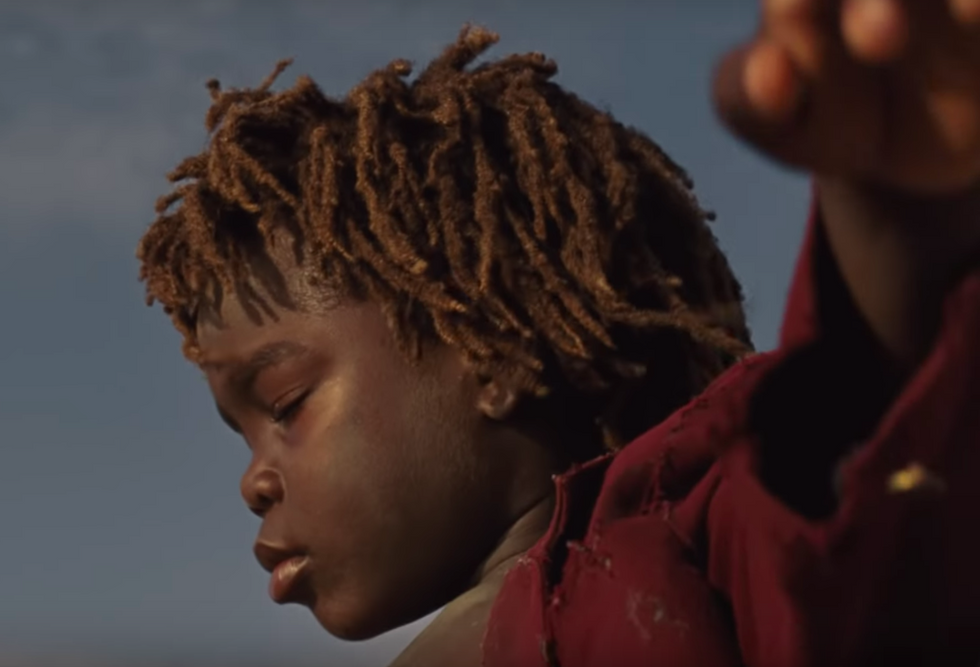
Zeitlin: Once we got to set, we'd shoot until the kids had to wrap. We were controlled by the kids' hours. We would have to find ways to shoot scenes with only half of them so that we would maximize their hours. So a lot of design went into just being able to maximize the amount of time we had every day after we did the hike into the set.
NFS: Looking back on everything, would you take on a challenge like this again?
Zeitlin: Yeah, I probably would. I loved making this film. It was the hardest thing I've ever done. But the life that we led with our cast and crew was just so monumental. To have a home on this Caribbean island now is incredible. I go back to Monserrat and I have a whole world there. That sort of life experience and process is so valuable to me. That's what I love about filmmaking.
"I help filmmakers figure out how to overcome what producers would say can't be done."
I wouldn't take on the exact same challenge again, of course. It would be a different one. I really believe that it's vital to create new things—images that haven't been captured before, things that are truly original. A lot has been done before, and a lot of what hasn't been done exists past the frontier of what people consider possible. Testing that limit is something that I really believe in.
I do a lot of work helping other filmmakers that are testing that limit. I help filmmakers figure out how to overcome what producers would say can't be done. Those are the films that I think are really vital to make.
NFS: What do you say to other people to help them push the limits at the frontier of filmmaking?
Zeitlin: It starts by believing that it can be done. I think that there's a resistance to depart from a very stratified production structure that has always existed. Most film productions feel like you're in the army or something. You have all of these tiers and you do your job and don't ask. The gateways for how to get involved in the industry are like that, too. But that's not how some filmmakers think. Some filmmakers don't think in words, for example. They think in images. Or they need to improvise or they need to spend time experimenting.
The military nature of film production is an intensely male way to think. So it's important to try to work to dismantle that and to empower filmmakers to work outside of that structure. This is how you create space for different types of voices. And for films that are impossible.











